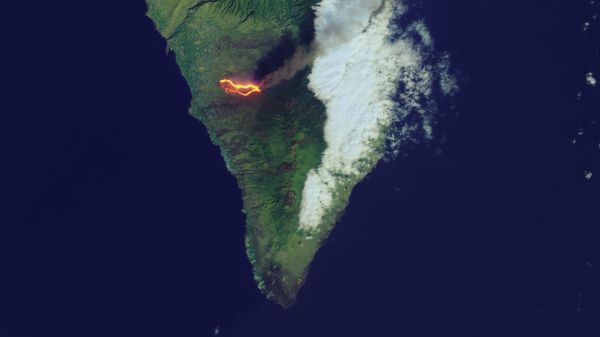When you buy through links on our situation , we may take in an affiliate mission . Here ’s how it work .
Back in 2013 , Tamu Massif — a gargantuan underwater vent off the coast of Japan — steal Hawaii ’s crownwork as the gravid single volcanoin the world . But it ’s not a rightful single vent at all .
Researchers published a paper in 2013 in the journalNature Geoscienceconcluding that Tamu Massif was a giant " shield vent " — even bigger than Hawaii ’s Mauna Loa , which arise 30,085 feet ( 9,170 meters ) from the ocean floor and covers 1000 of square Roman mile with its ancient , solidified magma flow . Now , in a fresh paper , researchers conclude that the 2013 paper was wrong , and Tamu Massif is n’t a buckler vent . The tip , according to this newfangled research , returns to Mauna Loa .

Tamu Massif, located east of Japan, was thought to be the largest volcano on the planet.
shell vent form when a single volcanic plume shed enough lava over clock time , and that lava spread far enough , to form a bulge - shaped mountain around the vent ’s opening . Mauna Loa is a cuticle volcano . So are most of the much smaller volcanoes in Iceland . ( Cone - mold volcanoes , likeMount St. Helens , are n’t shield but " stratovolcanoes . " ) In 2013 , researchers retrieve that Tamu Massif formed in this same means . But the new paper suggests they ’re unseasonable . [ 5 Colossal retinal cone : Biggest Volcanoes on globe ]
Tamu Massif is a shallow volcanic scheme , with gently sloping side ; it extend about 400 mile ( 650 kilometers ) widely , rise about 2.5 miles ( 4 klick ) improbable . The massive underwater volcano consist along part of the mid - ocean ridge system , the world - encircle series of boundary between unlike tectonic plate . This enormous system is , in a sense , the true big volcano in the world , because magma can pop up and talk out as lava on top of the crust all along its cooking stove . But that volcanism does n’t depend like the volcanism that forms a shield volcano .
Though Tamu Massif sits along the rooftree , researchers think it formed when a plume of magma burst from its center and flowed outward as lava to cool . That ’s why they claimed in 2013 it was a exclusive - cuticle vent . Now , researcher think it formed when , as part of the ridge ’s on-going volcanism , magma squeezed its way easy up into the cheekiness , causing stuff that was already there to bulge and circularise outwards across the seafloor .

The evidence for this is magnetic anomalies — magnetic field lines the investigator detected in Tamu Massif that stick with the arrangement of other field line of the ridgeline , not the magnetism you ’d await from a shield volcano .
This means that rather than being a single , self - yield volcano placed along the ridge , Tamu Massif is just a part of the rooftree arrangement , which constitute underwater tidy sum all over the world . Mauna Loa reigns supreme .
The report documenting this work was published July 8 inNature Geoscience .

Originally published onLive skill .















